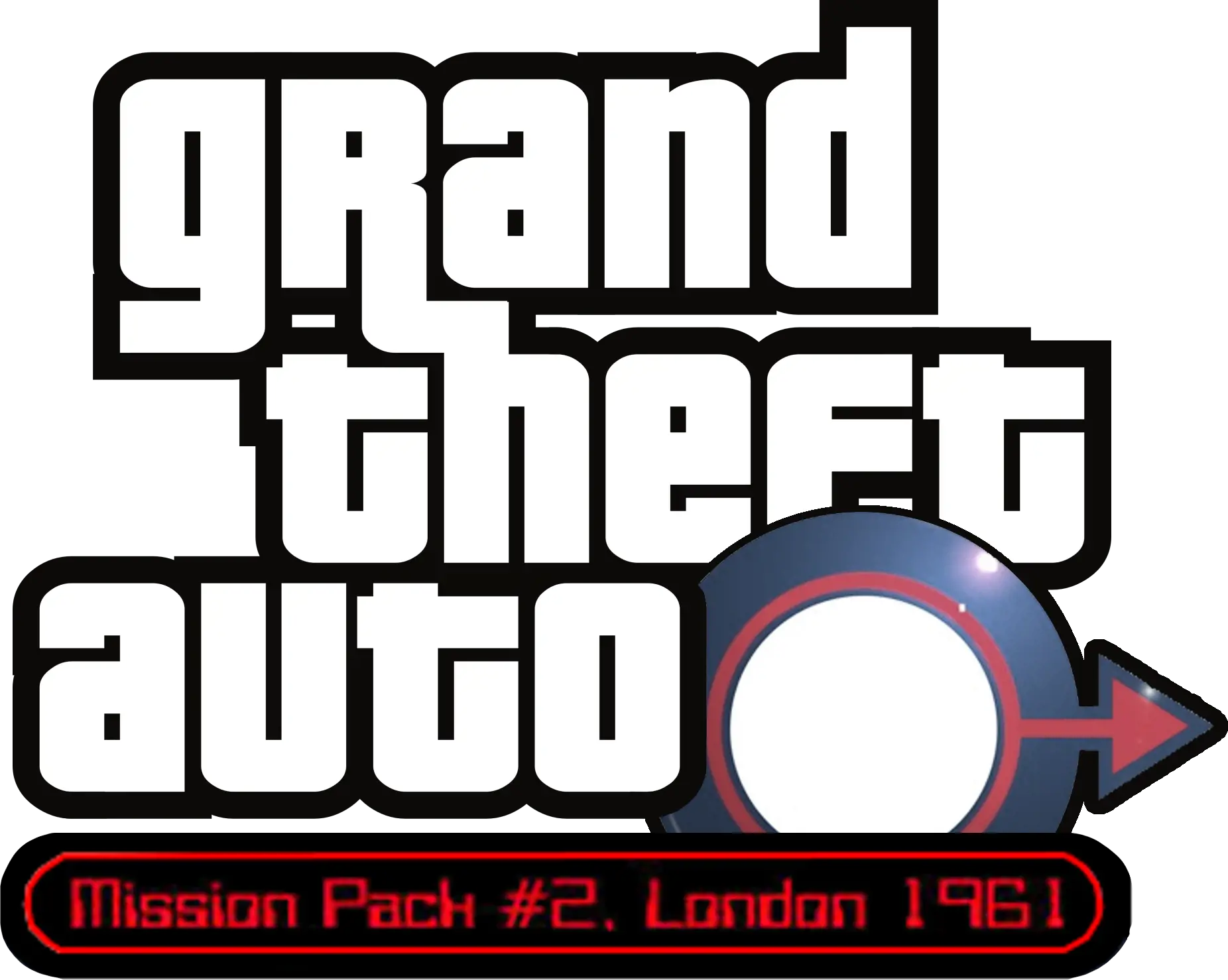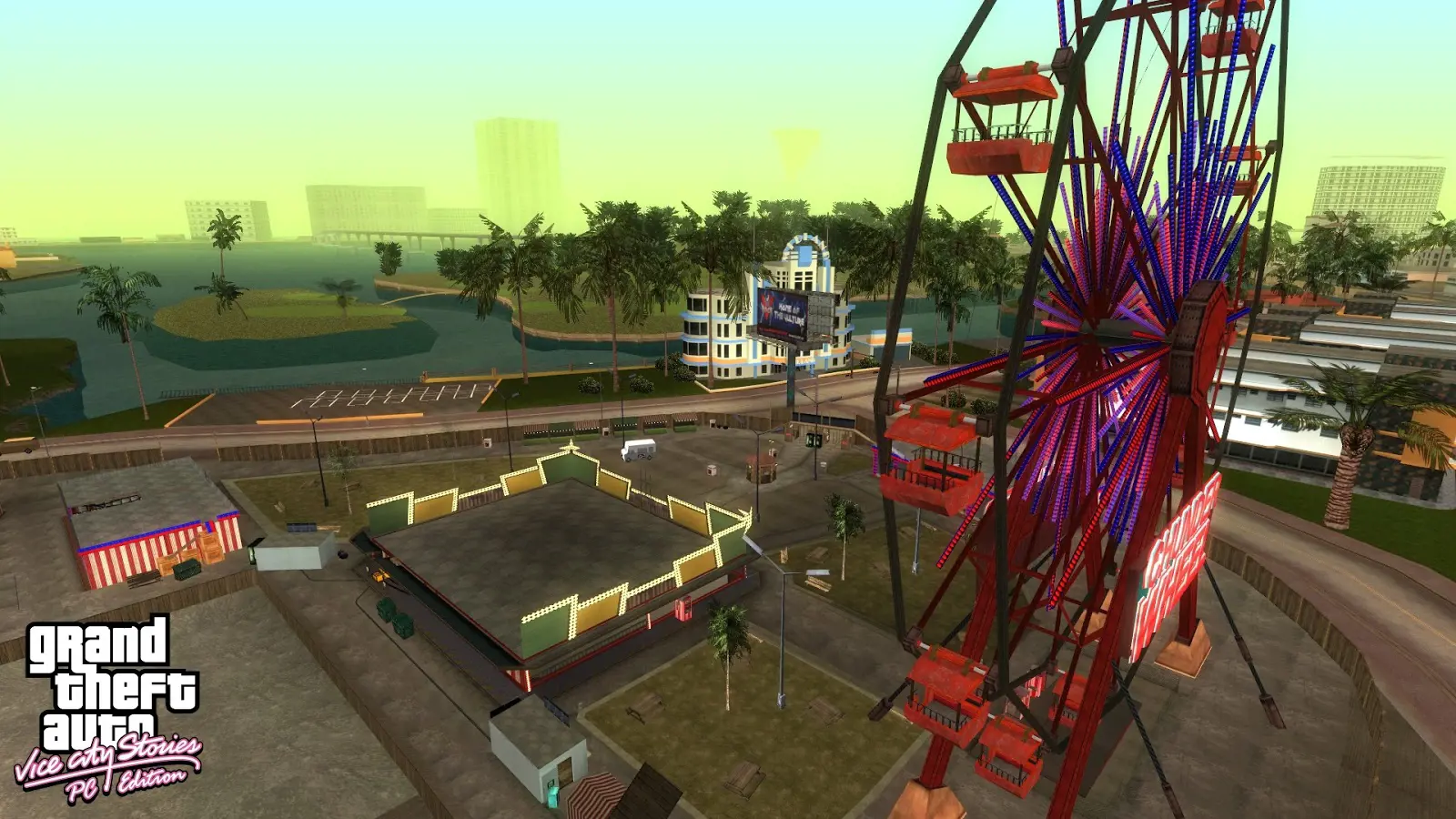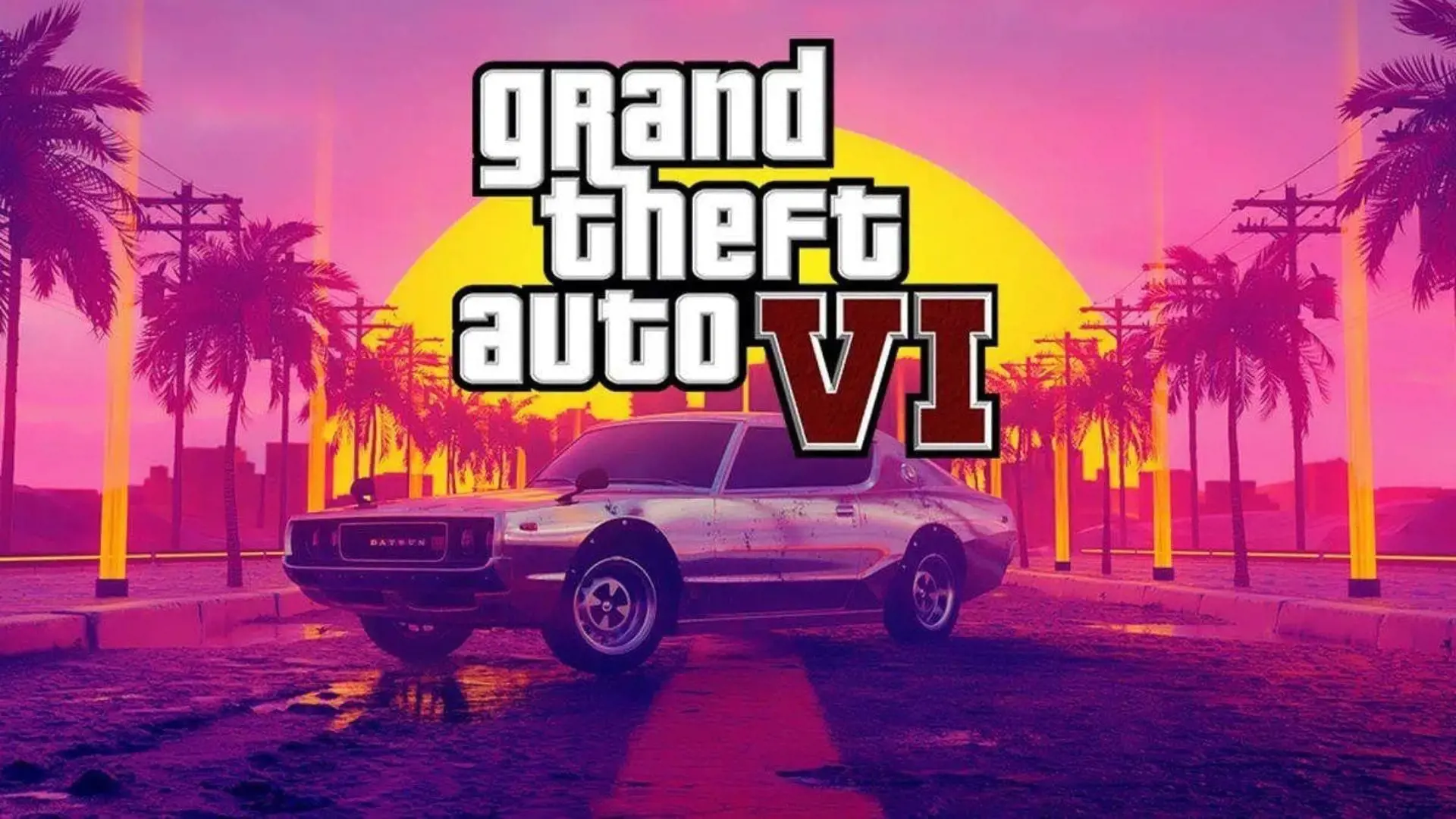The Grand Theft Auto (GTA) series has redefined open-world gameplay, storytelling, and player freedom since its inception.
Developed by Rockstar Games, the GTA series has evolved over the years, delivering a mix of immersive narratives, expansive cities, and a sandbox experience that invites players to explore the criminal underworld.
Not only that but the game series has always courted controversy due mainly to the mature themes, violence, and sexual content depicted in the games.
The games are set in fictional cities and regions with the player taking on the role of a criminal who must complete various missions to progress through the game.
Its also feature a wide range of vehicles, weapons, and other items that the player can use to complete missions and explore the game world.
1. Grand Theft Auto (1997)

Grand Theft Auto (GTA), the inaugural installment of the iconic video game series, made its debut in 1997, leaving an indelible mark on the gaming landscape.
Furthermore, GTA pioneered the concept of an open-world sandbox, inviting players to navigate a life of crime in a dynamic and ever-evolving urban environment.
This content explores the groundbreaking features, gameplay mechanics, and cultural impact of the original Grand Theft Auto.
GTA introduced players to a top-down perspective, a departure from the prevailing side-scrolling and 3D game design of the time. This viewpoint allowed for a comprehensive view of the game world, enhancing the strategic and tactical aspects of gameplay.
2. Grand Theft Auto: London 1969 (1999)

Grand Theft Auto: London 1969, an expansion for the original Grand Theft Auto (GTA), catapulted players into a time capsule, immersing them in the vibrant and tumultuous atmosphere of 1960s London.
This standalone expansion built upon the foundations of the original GTA, offering a nostalgic journey into a bygone era filled with iconic landmarks, stylish cars, and a distinctive soundtrack.
Not only that but London 1969 version recreated key landmarks such as Westminster, the Thames, and Trafalgar Square, providing players with a virtual tour of a stylized and condensed version of the city during a pivotal time.
3. Grand Theft Auto: London 1961 (1999)

Grand Theft Auto: London 1961 takes place in a fictionalized version of London during the 1960s.
Players assume the role of a criminal who works for several London-based crime syndicates and complete levels by achieving a set score within an open-world environment that allows them to do whatever they wish alongside jobs to achieve their goal.
Released in 1999, this expansion maintained the top-down perspective of the original GTA while infusing the game with the cultural flair and criminal intrigue of a bygone era.
Much like its predecessor, London 1961 introduced new playable characters which includes the likes of Albert and Archie Crisp, as they navigated the criminal underworld of London.
4. Grand Theft Auto 2 (1999)

Grand Theft Auto 2 is an action-adventure game developed by DMA Design and published by Rockstar Games in October 1999 for Microsoft Windows and PlayStation, and later for Dreamcast and Game Boy Color in 2000.
The game is set in a retrofuturistic metropolis known as 'Anywhere City' and features an open-world environment where players take on the role of a criminal and complete jobs for various crime syndicates.
The game received mixed reviews for most platforms, and negative reviews for the Game Boy Color, but was a moderate commercial success.
5. Grand Theft Auto III (2001)

Breaking away from the top-down perspective of its predecessors, Grand Theft Auto III marked the series' transition to full 3D, introducing players to the sprawling metropolis of Liberty City.
This pivotal release not only transformed the GTA series but also revolutionized the entire gaming industry with its immersive open-world design, narrative depth, and unparalleled freedom.
Not only that but the game featured a cast of memorable and morally ambiguous characters, including mob bosses, corrupt cops, and unpredictable allies.
The narrative unfolded through intricate missions, each contributing to the overarching story of betrayal, power struggles and vengeance.
6. Grand Theft Auto: Vice City (2002)

As the fourth installment in the GTA series, Vice City emerged as a cultural juggernaut, celebrating the excesses and glamour of the 1980s.
From the moment players landed in the fictional Vice City, inspired by Miami, they were immersed in a neon-drenched playground of crime, ambition and retro nostalgia.
The game embraced the cultural and aesthetic elements of the 1980s, including vibrant fashion, iconic music and the overall sense of indulgence.
The game's atmosphere transported players to a bygone era filled with references to pop culture and the spirit of the times.
Vice City (2002) featured a memorable supporting cast, including characters like Lance Vance, Ricardo Diaz, and the enigmatic lawyer Ken Rosenberg. The interactions and conflicts between these characters wove a captivating tale of betrayal, ambition and power.
7. Grand Theft Auto: San Andreas (2004)
.webp)
The game not only pushed the limits of the Grand Theft Auto (GTA) series but also became a cultural phenomenon, offering players an expansive and immersive journey into the heart of 1990s California.
Grand Theft Auto: San Andreas stands as a sprawling epic, combining a massive open-world environment, a complex narrative, and a diverse range of activities.
Furthermore, San Andreas introduced a host of memorable characters, including CJ's siblings, allies like Big Smoke and Ryder, and adversaries such as Officer Tenpenny. The diverse cast added depth and complexity to the narrative.
8. Grand Theft Auto Advance (2004)

Grand Theft Auto Advance may have been a scaled-down version of its console counterparts but it was a significant step for the GTA series in terms of platform diversity.
The game returned players to the familiar streets of Liberty City, albeit with a more compact design tailored for the limitations of the Game Boy Advance.
Staying true to the roots of the original GTA games, it utilized a top-down perspective.
The game followed the story of Mike, a small-time crook caught in a web of crime and corruption in Liberty City.
As players guided Mike through the criminal underworld, they encountered a cast of characters and navigated a narrative filled with twists and turns.
9. Grand Theft Auto: Liberty City Stories (2005)
.webp)
In 2005, Rockstar Games continued to expand the Grand Theft Auto (GTA) universe with the release of Grand Theft Auto: Liberty City Stories.
Despite the limitations of the handheld console, Liberty City Stories successfully delivered an open-world experience, complete with engaging characters, a compelling narrative and the signature gameplay mechanics that define the GTA series.
Furthermore, the Liberty series showcased the technical capabilities of the PSP, delivering impressive graphics, detailed environments, and dynamic lighting effects.
The handheld console successfully translated the gritty atmosphere of Liberty City to a smaller screen.
10. Grand Theft Auto: Vice City Stories (2006)

Grand Theft Auto: Vice City Stories transported players back to the vibrant and decadent Vice City, exploring the events that unfolded in the mid-1980s.
Serving as a prequel to the original Vice City, the game provided insights into the rise of criminal empires and the backdrop for the subsequent events in the series.
The game faithfully recreated the iconic landmarks of Vice City, from the neon-lit streets of Ocean Beach to the decadent interiors of clubs like Malibu and the Vercetti Estate.
Not only that but it introduced a multiplayer mode for the PSP, enabling players to engage in various cooperative and competitive game modes.
11. Grand Theft Auto IV (2008)
.webp)
Grand Theft Auto IV returned to the fictional Liberty City, a meticulously recreated version of New York.
This iteration of Liberty City featured a more realistic and detailed urban environment, capturing the diversity and complexity of a bustling metropolis.
The narrative of GTA IV was a departure from the straightforward stories of previous titles. It delved into themes of family, betrayal, and the pursuit of the American Dream, offering a more mature and nuanced storytelling experience.
Moreover, the game introduced a new physics engine and improved animations, contributing to more realistic and dynamic gameplay. The character movements, vehicle handling, and interactions with the environment were refined to enhance immersion.
12. Grand Theft Auto: The Lost and Damned (2009)
.webp)
With a darker and more intense narrative, The Lost and Damned brought a fresh take to the open-world gameplay established in GTA IV.
The expansion put players in the shoes of Johnny Klebitz, a high-ranking member of The Lost Motorcycle Club.
The setting shifted the focus from the diverse criminal elements of Liberty City to the specific dynamics and challenges faced by a biker gang.
Furthermore, it presented an interconnected storyline with the events of GTA IV, providing a new perspective on key moments and characters.
The expansion introduced new weapons and combat mechanics. From melee weapons to specialized firearms, the gameplay aligned with the aggressive style associated with motorcycle clubs.
13. Grand Theft Auto: Chinatown Wars (2009)
Designed specifically for handheld platforms, including the Nintendo DS and later the PlayStation Portable (PSP), this installment brought a compact yet immersive crime epic to players on the go. With a top-down perspective reminiscent of the series' roots, Chinatown Wars offered a unique take on Liberty City's criminal underworld.
The game maintained the open-world exploration aspect of the GTA series, allowing players to navigate the streets of Liberty City on the go. Despite the handheld limitations, the game provided a surprisingly vast and dynamic environment.
Furthermore, the game featured an evolving narrative filled with twists, betrayals, and power struggles within Liberty City's criminal factions.
The storyline unfolded through a series of missions and encounters, providing an engaging and unpredictable experience.
14. Grand Theft Auto: The Ballad of Gay Tony (2009)
.webp)
As the second episodic expansion for GTA IV, The Ballad of Gay Tony provided players with a fresh perspective on the criminal landscape of Liberty City.
Focused on the glamorous and high-stakes world of nightlife, this expansion introduced a new protagonist and a storyline filled with intrigue, betrayal, and adrenaline-pumping action.
The Ballad of Gay Tony transported players into the high-society nightlife scene of Liberty City. From exclusive clubs to luxurious penthouses, the expansion captured the glitz and glamour associated with the city's elite.
The game introduced a series of action-packed missions, including daring heists and high-stakes operations. The gameplay was characterized by intense firefights, aerial combat, and moments of cinematic spectacle.
15. Grand Theft Auto V (2013)
.webp)
Departing from the urban landscapes of Liberty City, GTA V took players to the fictional state of San Andreas, offering a vast and diverse playground for criminal activities.
GTA Auto V introduced the sprawling state of San Andreas, encompassing the urban metropolis of Los Santos, the arid expanses of Blaine County, and the picturesque landscapes in between.
Moreover, the game featured a dynamic and living environment with a day-night cycle, changing weather conditions, and a fully realized ecosystem.
A significant addition to GTA V was the introduction of a first-person mode, allowing players to experience the game from the perspective of each protagonist.
16. Grand Theft Auto Online (2013)
.webp)
As a dynamic and persistent multiplayer component, GTA Online allowed players to delve into the criminal underworld of Los Santos and Blaine County in a shared, ever-evolving online world.
This groundbreaking multiplayer mode transformed the GTA experience, offering a vast array of activities, missions, and opportunities for both cooperative and competitive play.
Players created their custom characters, choosing appearance, skills, and backgrounds.
Character progression involved completing missions, participating in activities, and accumulating wealth to unlock new opportunities for criminal enterprises.
17. Grand Theft Auto V Expanded and Enhanced (2021)

Grand Theft Auto V Expanded and Enhanced represents a significant leap forward for a game that has already left an indelible mark on the gaming landscape.
It allows players to carry over their progress and character data from previous versions of GTA Online.
This cross-platform progression ensures a smooth transition for players who migrate to the enhanced version on new gaming platforms.
The update introduces new vehicles and weapons to the already extensive arsenal available in GTA V.
These additions not only enhance the gameplay variety but also cater to the desires of players looking for novel ways to navigate the sprawling landscapes of Los Santos.










